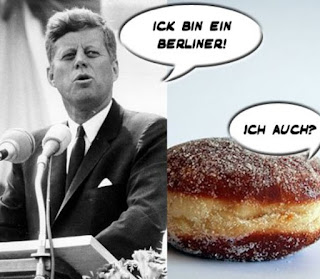So Who Was Mettoy Playcraft?
Mettoy Company Ltd. was founded in the UK in the early 1930s by Philipp Ullmann and Arthur Katz, who had both been part of the Nuremburg toy industry community, until the rise of the Nazi Party forced them to leave Germany.
The Mettoy name was registered in 1932, and the company commenced making traditional Nuremburg-style tinplate lithographed toys (with or without clockwork motors) in 1934, at a site in Northampton.
As with most toy manufacturers, production switched to war work during World War Two, and Mettoy Company’s wartime work focused on pressed steel products such as canisters and ammunition boxes, which forced the company to look at new processes and techniques, and move beyond their original "comfort zone" of Nuremberg-style printed tinplate.
Towards the end of the War, Mettoy started planning a major new factory in Fforestfach, Swansea, Wales, with work starting in 1948, and the factory being opened in 1949 by George VI.
After the success of Mettoy, Katz founded Playcraft Toys Ltd. as a separate company in 1949 to explore manufacturing of plastic toys. By 1956, Playcraft were advertising their main range as being "Painting by Numbers", "Picture Carving" and "Playtown Building Kits".
Playtown was a range of plastic clip-together kits that included the walls, roofs, doors, windows and signage needed to make a variety of town buildings.
Playcraft went on (in around 1961) to distribute a range of inexpensive mostly-plastic HO-scale model railways and pieces, with manufacture subcontracted to the French company Jouef.The two companies were subsequently merged.
All Playcraft Railways models were to Jouef's HO scale of 3.5 mm to the foot, so noticeably smaller than a UK model of a comparable piece of rolling stock.
Most of the train models were simply French wagons and coaches labelled as if they were British, There was a UK brake van ...
... a couple of UK coaches ...
... and a mineral wagon ...
... but fbb's bogie tank wagon was definitely not from This Sceptred Isle!
For your modest money you get a French wagon with a "Shell" paper label stuck on ...
... plus a UK style safety and contents notice also as a sticky label.
Underneath the model is "owned" by Playcrtaft ...
... but manufactured by Jouef. For their UK market, Playcraft fitted their rolling stock with Peco style couplings.
fbb's four wheeled tank wagon is so equipped; but, look at what recently arrived!
The bogie wagon had a variant of the Triang "hook and bar" coupling. A peruse of pictures on-line suggests that these weird non-standard fitments appeared on a whole range of Playcraft stuff ...
... but also the same vehicle appears with Peco at each end.
Even their only genuine UK loco is offered with both at different times.

Maybe it is a date thing. This catalogue illustration from the very early days of Playcraft Railway (1961) clearly shows the "Triang" type.
If any one "out there" can explain what happened coupling-wise, please contact your inquisitive author at:-
fbb@xephos.com
One thing does seem clear from on-line evidence; the little kiddies "toy" range has an even wierder system of uni-directional hooks and bars ...
... hook on one end of the wagon, bar on the other - nice and easy for the little ones to get wrong!
And, in case you wondered, Jouef in Europe sold the same bogie tank wagon as recently acquired by fbb with "continental" coupling add French labels.
The wagon is a model of a French prototype, fotr which fbb could find no pictures, but it has a passing similarity to a USA version.
And this is a Kleinbahn model of a French bogie tanker.
Also : Arriving Yesterday ...A rare and usually laughably expensive Hornby Dublo bogie tank wagon produced just before threcompany went phut.
One sold recently at auction for £140!! fbb paid a smidgen under £40 post free using his Christmas spending money - of which he received £00.00 this year.
If you can just look at it! Less so if you have to drive through it and even less so if you have passengers to care for.
Electric trains and snow don't always go together. Here a First South Western Railway 444 ...
... leaves Farnombe sparktacularly in Monday's snow.
And Farewell ...The original Heathrow Express units are being withdrawn and replaced by more "normal" trains. In what seem a crackpot decision, these not too old trains are going for scrap. Whilst during the present unprecedented circumstances there are plenty of seats on plenty of trains, you would have thought they might have been of use somewhere on the network.
Now here's an idea. Vivarail could fit steam engines burning environmentally acceptable biomass and use them on quiet branches. It has been done before.
But now we have Brexit done, fbb celebrates by moving briefly into Europe.
Remembering JFK's 1963 memorable "I am a jam doughnut" speech ...
... tomorrow fbb takes his readers to Berlin.



















































